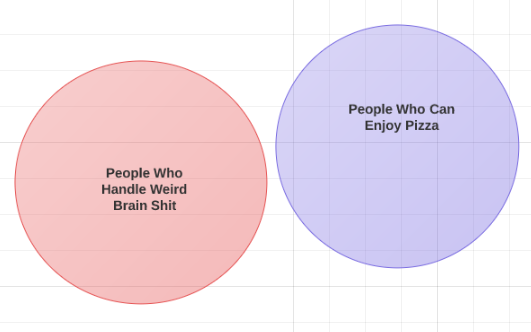Arbitrary and in no particular order!
1. Left-brain, Right brain?
No. Staaaaaaaaaahp
While it is true that in most adults language is localized in the left hemisphere of the brain, (but not for 40% of left handed people! About 20% have right-side localization and another 20% have bilateral language) and it appears that the right side of the brain handles processing new situations….that’s a far cry from being “left-brained” or “right-brained”. Wanna learn actual really cool stuff about brain hemispheres? Go look at the case of split-brain patients.
2. Your brain is not mostly made up of neurons.
Neurons are really neat, and they obviously have an impact on your thoughts. But have you heard of neuroglia? They outnumber neurons 10 to 1. That’s right, for every neuron, you have ten glia. Their functions aren’t quite so earth shaking, but they’re the streetsweepers and maids and mechanics, keeping the whole system running smoothly. Wikipedia does a nice summary.
3. Hot water, cold water? Your brain is not so good at this.
Sometimes when you run your hand under very hot water, it seems almost cold for a split second. If you’re like me, you shiver when you step into a hot bath or jacuzzi. When researchers had two unlabeled pipes, one with hot water and one with cold water running through them, patients who briefly held one couldn’t say which it was. Why?
The surface area problem: hot and cold nerve receptors are located in too close proximity, and will sometimes fire incorrectly if overstimulated. Known as paradoxical cold (when a cold receptor fires at high heat) and paradoxical warmth (when a warm receptor fires at cold temperatures), your brain can override with other knowledge. For instance, I am quite sure that my bath is steaming and the rest of my body is perceiving the heat rising off of it. So, I scrap the notion that I could be stepping into an icebath and feel warmth. Here’s a good summary at Mental Floss.
4. Neurons migrate.
After they’re created, neurons have to move in the right direction and make the right connections. It’s possible that they make the journey by following radial glia (Oh, the undervalued glial cells). When incorrect migration occurs, you get all sorts of severe disorders.







